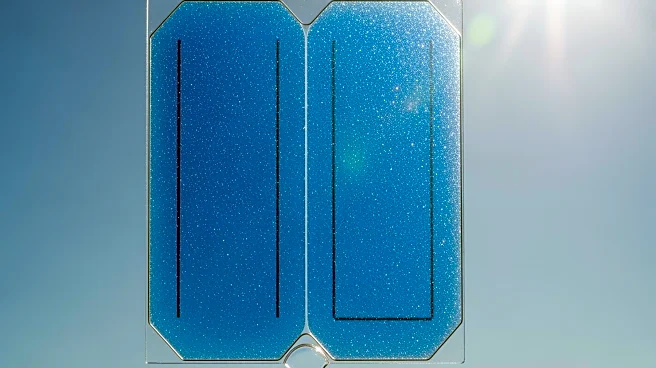What's Happening?
Researchers have developed ZnO nanostructures embedded with Er3+ and Yb3+ ions, showing promise for photonic applications. The study highlights the enhanced crystallinity and optical properties of these
nanostructures, which exhibit high electron mobility, UV radiation absorption, and piezoelectric capabilities. The incorporation of Yb3+ ions increases crystallite size and improves optical conductivity, making these materials suitable for optoelectronic devices and solar cells. The research suggests that co-doping with rare earth elements can significantly enhance the photoluminescence efficiency of ZnO materials.
Why It's Important?
The development of ZnO nanostructures with improved optical properties has potential applications in the field of photonics, including solar cells and optoelectronic devices. The ability to enhance photoluminescence efficiency through co-doping with rare earth elements could lead to more efficient energy harvesting and improved device performance. This research contributes to the advancement of materials science and the development of new technologies in renewable energy and electronics.
What's Next?
The study suggests further exploration of the effects of rare earth co-doping on ZnO nanostructures to optimize their optical properties for specific applications. Researchers may focus on refining the synthesis methods and exploring additional applications in photonics and optoelectronics. The potential for these materials to improve solar cell efficiency and other energy-related technologies could drive continued research and development.
Beyond the Headlines
The research on ZnO nanostructures highlights the importance of material purity and the role of rare earth elements in enhancing optical properties. The findings could influence future studies on the integration of advanced materials in energy and electronics, potentially leading to breakthroughs in sustainable technology.











